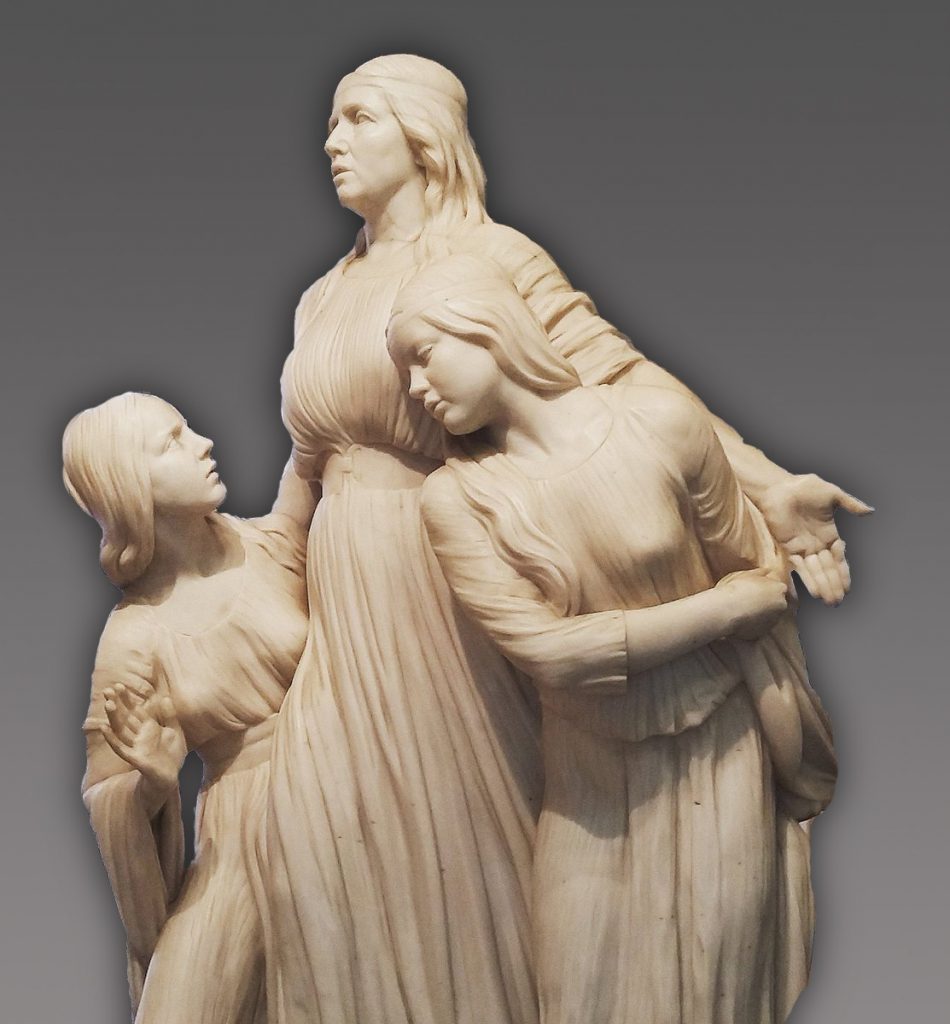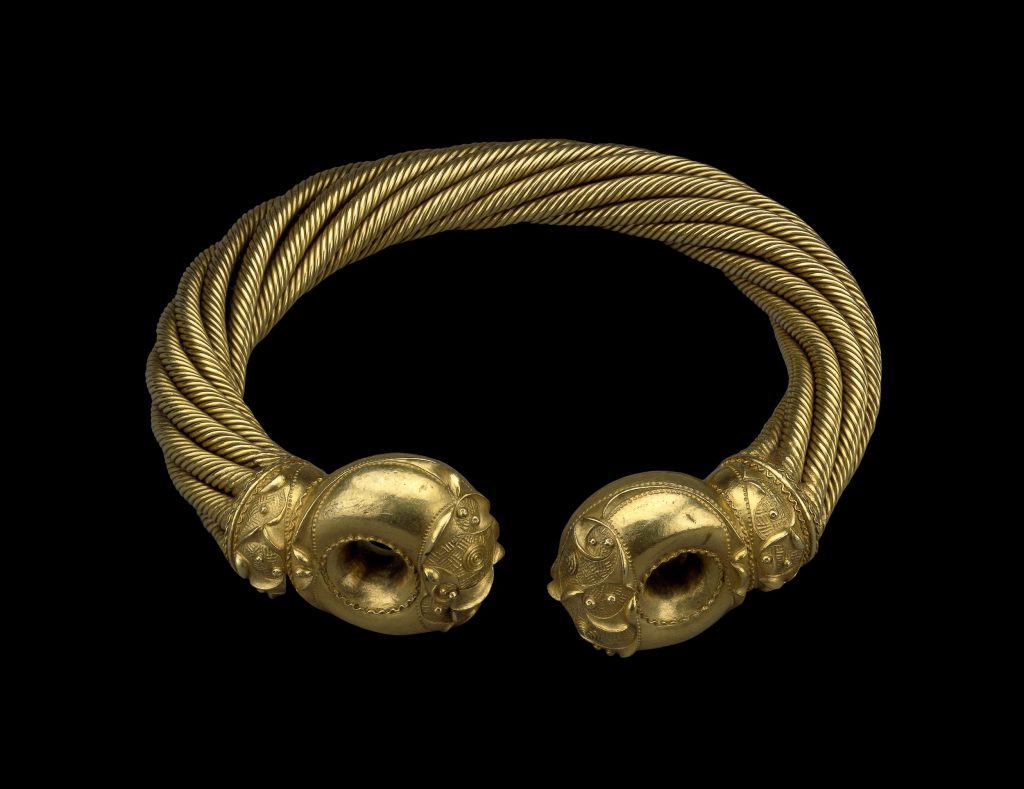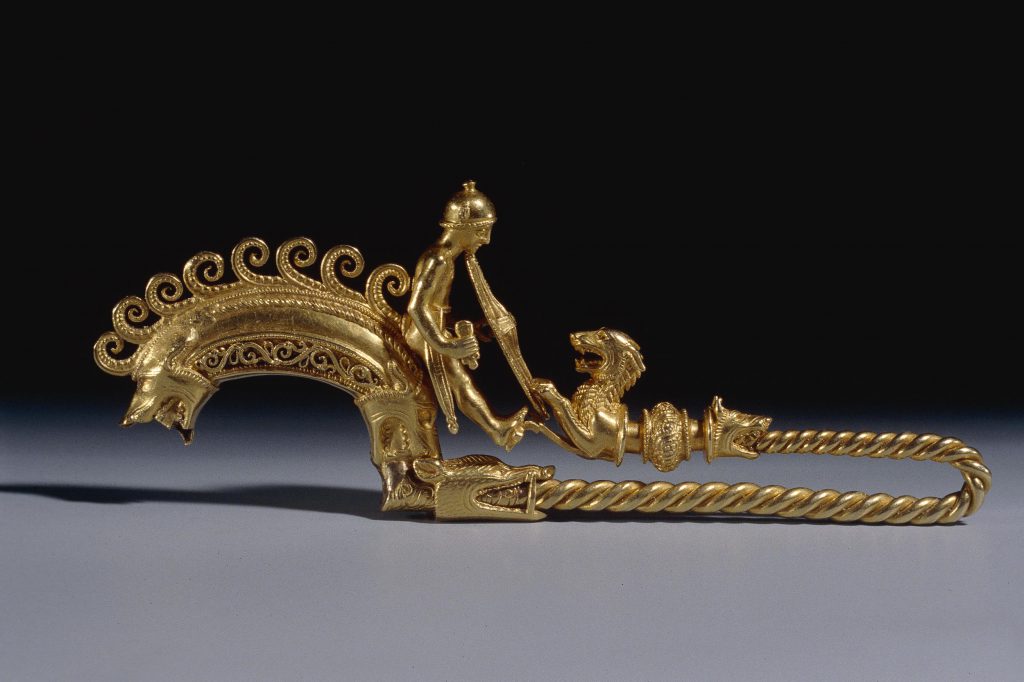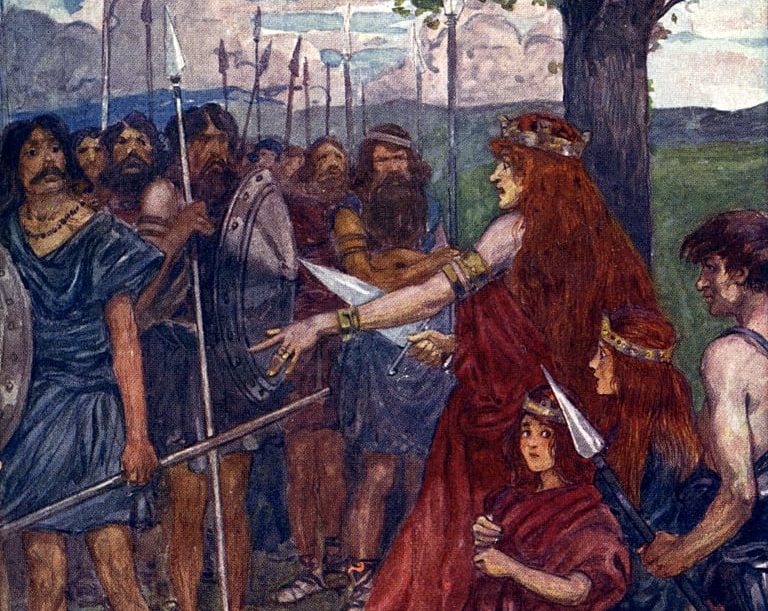Her characteristic image, with long flaming hair, is a modern invention. Cassius Dio is the only author to give us a description (this from a man who was born a hundred years after her death). Below are two different translations of Dio’s description of Boudica (LXII 2.2):
In person she was very tall, with a most sturdy figure and a piercing glance; her voice was harsh; a great mass of yellow hair fell below her waist
Cassisu Dio, The Histories of Rome: Book LXII, Chapter 3 (Foster 1905)
In stature she was very tall, in appearance most terrifying, in the glance of her eye most fierce, and her voice was harsh; a great mass of the tawniest hair fell to her hips;
Cassisu Dio, The Histories of Rome: Book LXII, Chapter 3 (Translation by Cary and Foster 1914)
The word he uses for hair colour is ξανθοτάτος – xanthotatos – literary meaning ‘most golden’. With xanthos in Greek referring to anything from blonde through to auburn, it is difficult to tell what hair colour Cassius Dio imagined. But perhaps even in Roman times the idea of the fiery Celtic redhead was already a thing.
Dio describes Boudica as an extremely masculine woman with very long blonde/ red/ auburn hair. It was custom for Celtic aristocratic women to grow their hair long. As only the privileged had the time to tend to the upkeep of their hair, it indicated high status.

Boudica’s Golden Torc
around her neck was a large golden necklace
Cassisu Dio The Histories of Rome: Book LXII, Chapter 3
Both Celtic men and women wore heavy gold bracelets on their arms. Celtic torcs were made using metals such as gold, silver, copper, iron, and bronze. They are formed either with smooth, hollow, or twisted bands. Several bands could be twisted around themselves or spiralled around a core of iron or even wood. Some torcs have been given extra shine using the mercury gilding technique which leaves a pure gold surface after the mercury has been evaporated under heat.

Boudica’s cloak of many colours
she wore a tunic of divers colours over which a thick mantle was fastened with a brooch. This was her invariable attire.
Cassisu Dio The Histories of Rome: Book LXII, Chapter 3

British Museum (CC By 4.0)
Fabric which possessed many colours and designs signified it was of high quality, and the wearing of torques was also a Celtic cultural custom.
The ancient Celts were particularly fond of creating ornate brooches and pins. Needed for the practical function of holding clothing together, brooches soon developed from plain bronze and iron fibulae into highly ornate status symbols and amulets worn by men, women, and children. Earlier brooches might take the form of animals, especially horses and snakes but also human heads, bells, and drums.
